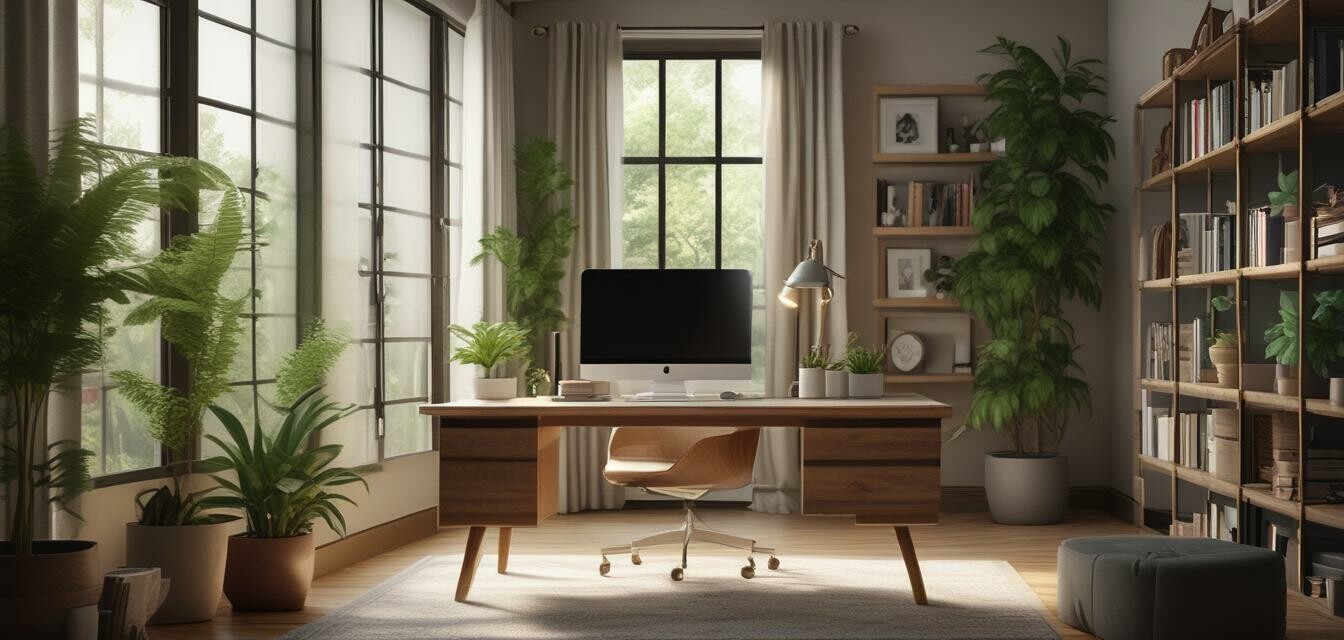
Exploring the Shift to Biophilic Design in Home Offices
Key Takeaways
- Biophilic design integrates natural elements into home office setups.
- This design philosophy enhances well-being and productivity.
- Important elements include natural light, plants, and natural materials.
- Incorporating biophilic design is a growing trend in home office furniture.
- Adopting biophilic elements can lead to a more inspiring workspace.
The shift towards remote work has brought about many changes in how we design our home offices. One of the most notable trends is the incorporation of biophilic design, a philosophy that emphasizes the connection between individuals and nature. This article analyzes the growing trend of biophilic design in home office settings and how it significantly impacts our well-being and productivity.
What is biophilic design?
Biophilic design refers to the practice of connecting people to their natural environment through the design of spaces. This can include using natural light, incorporating plants, utilizing natural materials, and creating views of nature. The goal is to enhance the experience of the inhabitants, making spaces not just functional, but also rejuvenating and inspiring.
The importance of biophilic elements
In the context of home office furniture, biophilic design promotes several benefits:
- Improved air quality: Plants can help purify the air, creating a healthier workspace.
- Enhanced mood: Natural elements are known to elevate mood and reduce stress.
- Increased productivity: A well-designed biophilic space can boost focus and creativity.
- Connection to nature: Biophilic design fosters a sense of tranquility and well-being.
Key components of biophilic design in home offices
To effectively incorporate biophilic design into your home office, consider these key components:
| Element | Description |
|---|---|
| Natural light | Maximize daylight by positioning desks near windows or using light tubes. |
| Indoor plants | Use potted plants, hanging plants, or green walls to bring life to your workspace. |
| Natural materials | Incorporate wood, stone, or organic textiles in your furniture and decor. |
| Views of nature | When possible, create a workspace with views of outdoor landscapes or gardens. |
| Water features | Add a small fountain or aquarium to introduce calming water sounds. |
Embracing biophilic design trends
As the demand for home office furniture rises, so does the opportunity to embrace biophilic design. Here are some current trends in this area:
- Use of sustainable materials in furniture production.
- Integration of smart home technology to optimize natural light and air quality.
- Popularity of modular furniture that allows for flexible and adaptable workspaces.
- Increase in designers who specialize in biophilic design.
Creating your own biophilic workspace
Transforming your home office into a biophilic paradise doesn't have to be overwhelming. Follow these simple steps:
- Assess your space: Identify areas where you can introduce natural elements.
- Choose your plants: Select low-maintenance indoor plants that thrive in your light conditions.
- Incorporate natural materials: Use wooden desks, stone decor, and organic fabrics.
- Maximize light: Arrange your workspace to take advantage of natural daylight.
- Personalize: Add touches of nature that resonate with you, like art or photographs of landscapes.
The future of home office design
As we continue to navigate the shift to remote work, biophilic design is likely to play a central role in shaping home office trends. Companies and consumers alike are increasingly prioritizing well-being and productivity through their workspace designs.
In conclusion, the incorporation of biophilic design into home offices is much more than a passing trend. It represents a deep-seated shift towards creating inspiring, functional, and healthy work environments. For those interested in exploring more about office desks, or other furniture options, our comprehensive guides will help you navigate these evolving design landscapes.
Pros
- Enhances workspace aesthetics.
- Improves employee well-being.
- Boosts productivity and focus.
- Promotes sustainability.
Cons
- Initial investment in plants and materials may be high.
- Maintenance of plants can be time-consuming.
- Limited by indoor space and natural light availability.
Tips for beginners
- Start small by adding a few indoor plants to your desk.
- Consider lighting as an essential part of your design—look for ways to maximize natural daylight.
- Research plants that are best suited for your workspace conditions.
- Explore other blog articles for additional tips on creating the perfect home office.